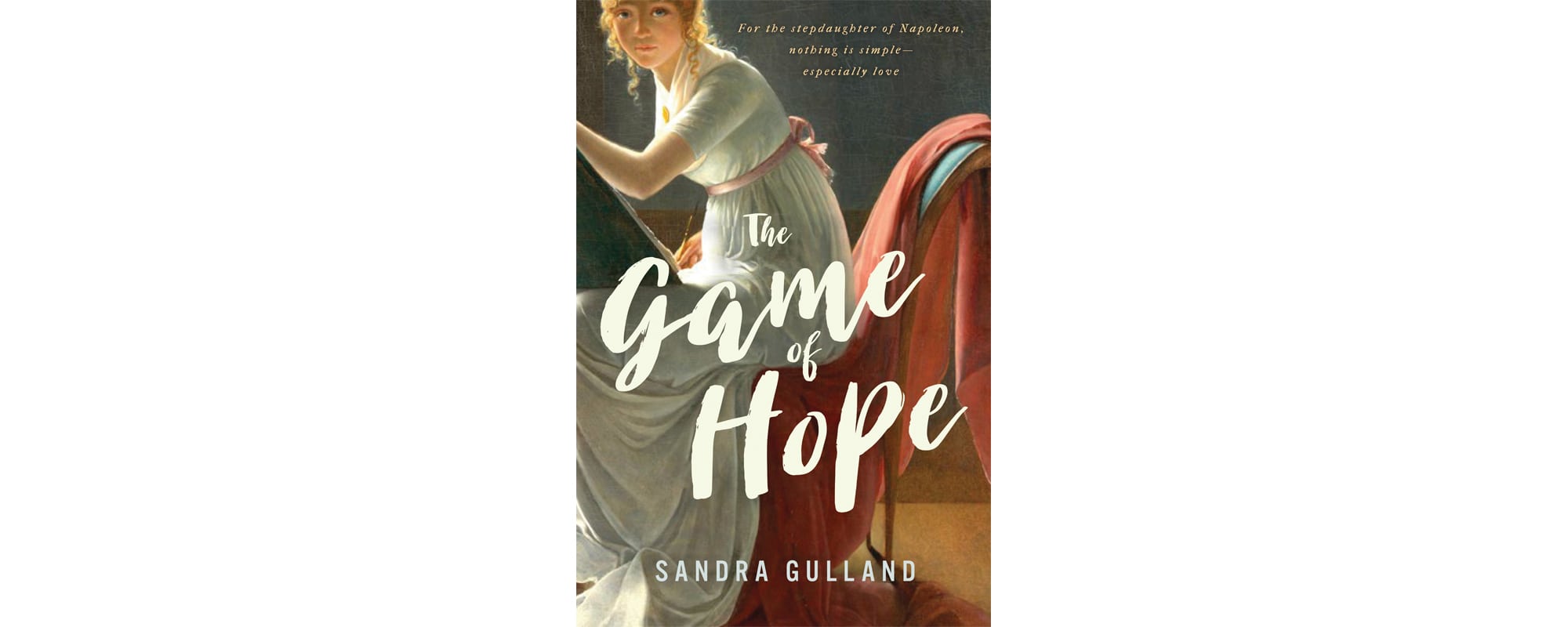 In Sandra Gulland’s new YA novel, the titular game involves a fortune-telling card deck similar to tarot or lotería. It’s a perfect narrative frame for the novel’s protagonist, Hortense de Beauharnais, whose new stepfather just happens to be Napoleon Bonaparte. Hortense (a real historical figure) has recently lost her father, guillotined during the Reign of Terror, and her world is a turbulent one, as unpredictable as the flip of a card.
In Sandra Gulland’s new YA novel, the titular game involves a fortune-telling card deck similar to tarot or lotería. It’s a perfect narrative frame for the novel’s protagonist, Hortense de Beauharnais, whose new stepfather just happens to be Napoleon Bonaparte. Hortense (a real historical figure) has recently lost her father, guillotined during the Reign of Terror, and her world is a turbulent one, as unpredictable as the flip of a card.
Gulland has built a career writing historical fiction for adults, including a bestselling trilogy about Joséphine Bonaparte (Hortense’s mother). Her pitch-perfect balance of lush period details and character-driven narrative shines again in The Game of Hope.
Each chapter opens with a card from the titular game, which symbolizes what will come in that section. From “the rider” to “the coffin,” the cards give clues as Hortense moves from school to estate to palace and experiences her first brush with love in the form of a dashing officer.
Gulland takes a risk in Hortense: she’s an engaging protagonist, but there’s an inherent challenge for contemporary readers to relate to a young woman who views Marie Antoinette and Louis XVI as martyred heroes and the revolutionaries of France as monsters. Hortense’s feelings and views make sense, given her upbringing and her father’s horrific death, but for readers more used to sympathizing with aristocracy-rejecting Darnay of A Tale of Two Cities it takes a few chapters to sink into her perspective.
In the same vein, the way Hortense reacts to some situations can be mildly jarring. When a friend rails against the injustice of being forced to marry a man she doesn’t love, Hortense has passing sympathy but mostly chides her friend’s reluctance to welcome an older, unattractive stranger into her life and bed.
Yet Gulland’s fidelity to historical accuracy is necessary to properly situate and understand her young character’s life. Reading historical fiction means immersing oneself in not only the trappings of the time but the attitudes and contexts as well. Impressively, Gulland’s risky portrayal of Hortense pays off, as over the course of the novel she turns into a cheer-worthy protagonist.
As the story progresses, we get less breathless admiration of Marie Antoinette and more of what makes Hortense interesting and, despite experiencing adolescence at a fulcrum of history, accessible. She is grounded in her fierce love for her friends and older brother, her complicated relationship with her well-meaning but inattentive mother, and her burning, secret desire to compose music.
In Gulland’s hands, Hortense’s life and history, as dramatic as it is, never overwhelm her character. Her friendships, her music, and her mother remain steady anchors. Even with Joséphine and Napoleon as supporting characters – ones so historically charged that they could easily take over a narrative – the story remains firmly Hortense’s.
While the book ends when the protagonist is a teenager, a note at the end of the novel lays out Hortense’s fate. After spending hundreds of pages playing the game of hope with a bright, tough, memorable young woman, this encounter with her ultimately grim reality will make readers realize just how attached they are to this unusual heroine.
 Contact us via email
Contact us via email

